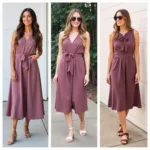Purple, a color often associated with royalty, creativity, and mystery, holds a captivating allure. Whether you’re an artist blending paints, a DIY enthusiast experimenting with dyes, or simply curious about the magic of color mixing, understanding how to make purple opens up a world of possibilities. This guide delves into the fascinating realm of color theory, providing you with the knowledge and techniques to confidently create a spectrum of purple hues.
Decoding the Purple Palette: Primary Colors are Key
At the heart of creating purple lie the primary colors: red and blue. These fundamental hues serve as the building blocks for a vast spectrum of colors, including our star – purple.
- Red + Blue = Purple: The basic principle is simple: combining red and blue in varying ratios yields different shades of purple.
Mastering the Art of Purple Hues: Factors that Influence Shade
The beauty of mixing purple lies in its versatility. Subtle shifts in the proportions of red and blue, along with the introduction of other colors, lead to a diverse range of purple shades, each with its unique character.
1. The Red-Blue Ratio:
-
More Red: A dominance of red results in warmer purple tones, such as magenta, mulberry, and plum. These shades exude energy and vibrancy.
-
More Blue: A higher proportion of blue creates cooler purple hues, like indigo, lavender, and violet. These shades evoke a sense of tranquility and sophistication.
2. The Influence of White and Black:
-
Adding White: Incorporating white lightens the purple, creating pastel shades like lilac and mauve. These hues are soft, delicate, and often associated with femininity.
-
Adding Black: Introducing black deepens the purple, resulting in rich, dramatic shades like eggplant and amethyst. These hues convey a sense of luxury, mystery, and power.
Exploring Different Mediums: Making Purple in Various Forms
The principles of color mixing remain consistent across various mediums, whether you’re working with paint, dye, or even food coloring.
1. Purple in Paint:
- Acrylic, oil, or watercolor – the fundamental principle of mixing red and blue holds true. Experiment with different ratios and observe how the purple hue transforms on your chosen surface.
2. Purple in Dye:
- Fabric dyeing offers a world of opportunities to infuse textiles with vibrant purple hues. Follow the dye manufacturer’s instructions carefully, as the intensity and shade may vary depending on the fabric content and dyeing process.
3. Purple in Food Coloring:
- Yes, you can even create purple in your kitchen! Combining red and blue food coloring allows you to tint frostings, cake batters, and other culinary creations with this regal hue.
what colors make purple in food coloring
Tips for Successful Purple Mixing:
-
Start Small: Begin with small amounts of red and blue, gradually adding more of either color until you achieve the desired shade.
-
Keep it Consistent: When mixing larger quantities, ensure consistency by pre-mixing the red and blue in separate containers before combining them.
-
Test Before Committing: Always test the purple hue on a scrap piece of paper or fabric before applying it to your final project. This allows for adjustments and prevents unexpected results.
The Allure of Purple: More Than Just a Color
Purple holds a timeless appeal, transcending cultural boundaries and artistic expressions. From the majestic robes of ancient emperors to the captivating canvases of renowned painters, purple has left an enduring mark on history and aesthetics.
“Purple possesses a unique ability to evoke a sense of wonder and intrigue,” says renowned color psychologist Dr. Amelia Grant. “Its association with creativity and imagination stems from its position on the color spectrum, bridging the gap between the stimulating energy of red and the calming serenity of blue.”
Conclusion: Embracing the Versatility of Purple
Creating purple is a journey of discovery, allowing you to explore the interplay of color and unleash your creative spirit. By understanding the fundamental principles of color mixing and experimenting with different ratios and mediums, you can confidently incorporate this captivating hue into your artistic endeavors, DIY projects, and everyday life.
[what colors.make purple](http://colorbox.com.vn/what colors.make purple/)
FAQ:
-
Can I use any shade of red and blue to make purple? While any red and blue will technically create purple, using primary shades will yield the purest results. Mixing secondary or tertiary colors may introduce unwanted undertones.
-
What happens if I add yellow to purple? Adding yellow to purple will create a muddy brown or gray hue, as these colors are considered complementary and tend to neutralize each other.
-
Can I lighten a purple hue that’s too dark? Yes, you can lighten a dark purple by gradually incorporating small amounts of white paint, dye, or food coloring.
-
Is it possible to create a metallic purple? Yes, metallic purple shades can be achieved by using paints or dyes with metallic pigments or by adding a clear gloss medium with a metallic finish over a standard purple base.
-
What are some common color combinations that work well with purple? Purple pairs beautifully with a variety of colors, including yellow (for a complementary contrast), green (for a natural harmony), and gray (for a sophisticated and modern look).
Need More Help with Colors?
Do you have more questions about creating colors or need assistance with your next painting project? Contact us!
Phone: 0373298888
Email: [email protected]
Address: 86 Cầu Giấy, Hà Nội
Our team of color experts is available 24/7 to provide guidance and support for all your color-related needs.

